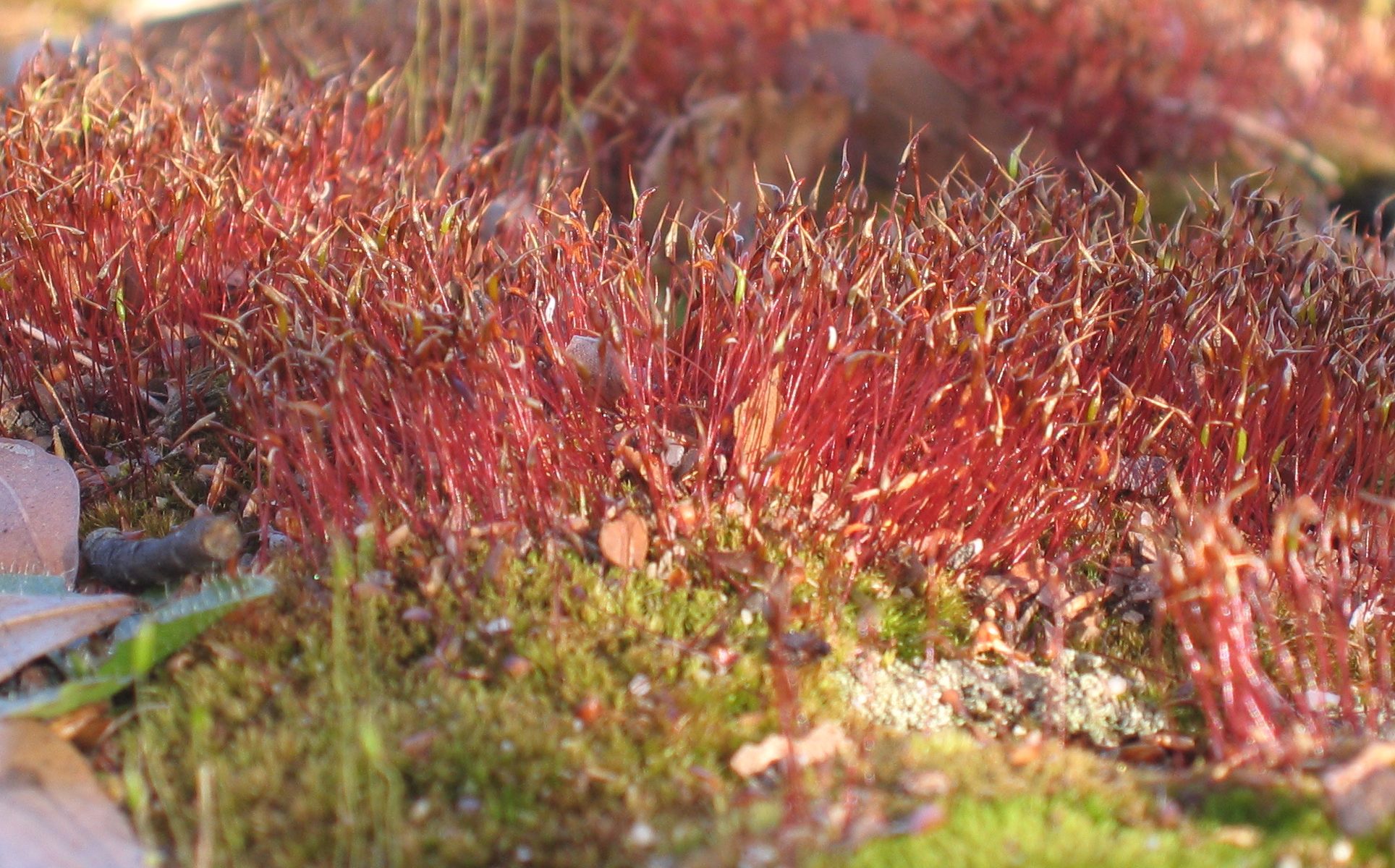At least eight genes have been captured by the non-recombining portion of the Ceratodon sex chromosomes in the recent history of the species.
Sex chromosomes evolve from ordinary autosomes through the expansion and subsequent degeneration of a region of suppressed recombination that is inherited through one sex. Kurt Neubig and Adam Payton in the McDaniel lab investigated the relative timing of these processes in the UV sex chromosomes of the moss Ceratodon purpureus. In this system recombination is suppressed on both the female-transmitted (U) sex chromosome and the male-transmitted (V) chromosome. Genes on both chromosomes therefore should show the deleterious effects of suppressed recombination and sex-limited transmission, while purifying selection should maintain homologs of genes essential for both sexes on both sex chromosomes.
Kurt and Adam first identified eight new sex-linked loci in C. purpureus. Using molecular evolutionary analyses they showed that the non-recombining portions of the U and V-chromosomes expanded in at least two events (∼0.6 – 1.3 MYA and ∼2.8 – 3.5 MYA), after the divergence of C. purpureus from its dioecious sister species, Trichodon cylindricus and Cheilothela chloropus. Both U and V-linked copies showed reduced nucleotide diversity and limited population structure, compared to autosomal loci, suggesting that the sex chromosomes experienced more recent selective sweeps that the autosomes. Collectively these results highlight the dynamic nature of gene composition and molecular evolution on non-recombining portions of the U and V sex chromosomes.
